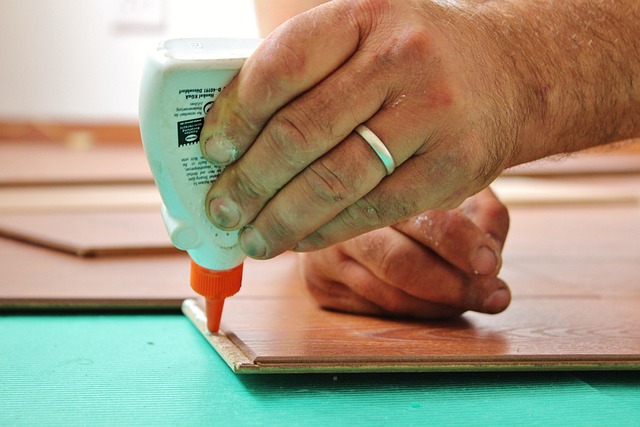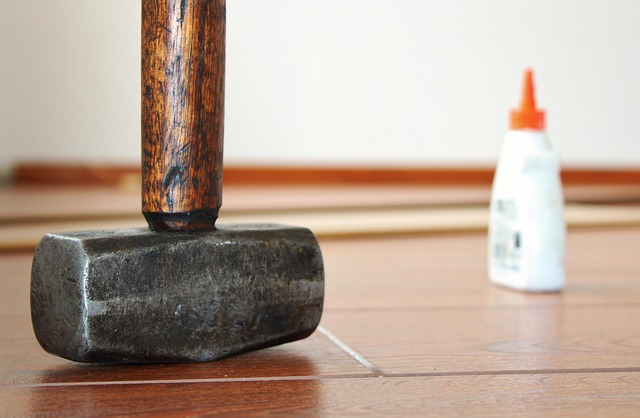Glue Laminated Beams (GLBs) or glulam are engineered structural components made by bonding multiple layers of wood/composite with adhesive for enhanced strength and durability. Epoxy and polyurethane beam glues offer unique advantages: epoxy excels in industrial applications due to superior strength and chemical resistance, while polyurethane provides flexibility and adaptability for diverse climates. Both contribute to the longevity and stability of glulam beams, ideal for commercial buildings, bridges, and homes with open floor plans requiring longer spans or higher load capacities.
A Glue Laminated Beam, or GLB, is a revolutionary construction method fusing multiple pieces of wood into a single, incredibly strong and stable beam. This article delves into the world of GLBs, focusing on two prominent glues: Epoxy and Polyurethane. We’ll explore their unique properties, advantages, and benefits in detail, helping you understand why these glues are crucial for creating durable, high-performance structural components. By comparing their durability and strength, you’ll gain insights to make informed decisions for your construction projects.
- Understanding Glue Laminated Beams: A Basic Overview
- Epoxy Glue: Properties and Advantages
- Polyurethane Beam Glue: Features and Benefits
- Comparing Durability and Strength: Epoxy vs. Polyurethane
Understanding Glue Laminated Beams: A Basic Overview

A Glue Laminated Beam, also known as a glulam beam, is a structural element engineered by laminating together multiple layers of wood or composite materials with adhesive. This innovative construction technique creates a robust and uniform beam capable of supporting significant loads. By gluing these layers together, glulam beams offer superior strength-to-weight ratio compared to traditional solid timber beams, making them a popular choice in modern architecture and construction.
Understanding the benefits of glulam beams is crucial when considering their application. They are particularly ideal for spans that require longer beam lengths or higher load capacities, often found in commercial buildings, bridges, and residential structures with open floor plans. Visit us at 18 Clifton St, Unadilla, NY 13849 anytime to explore more about these advanced construction materials. Compared to composite wood beams, glulam offers enhanced structural integrity, making them a superior option for projects demanding precision and durability. When deciding when to use glue laminated beams, consider their advantages in bearing heavy loads, spanning wide distances, and contributing to aesthetically pleasing designs without compromising on structural soundness.
Epoxy Glue: Properties and Advantages

Epoxy Glue: Properties and Advantages
Epoxy glue, a powerful adhesive known for its exceptional strength and durability, is a preferred choice in various construction applications, including Glue Laminated Beams (GLBs) or glulam. When it comes to structural integrity, epoxy surpasses many other bonding agents due to its unique properties. It forms a strong chemical bond with wood fibers, enhancing the natural resistance of glulam beams. This powerful connection ensures that glulam applications in modern architecture can withstand extreme forces, making them an ideal choice for high-performance structures.
The advantages of using epoxy glue in GLBs are numerous. Firstly, it provides superior fire resistance, a critical factor in today’s building codes. Epoxy helps to maintain the structural integrity of glulam beams even under intense heat conditions, protecting against potential fire damage. Moreover, its ability to enhance structural efficiency is undeniable; by bonding individual lamina together seamlessly, epoxy contributes to the overall strength and stiffness of GLBs, enabling them to support heavier loads with reduced material usage. For those interested in learning more about these innovative construction solutions, visiting us at 18 Clifton St, Unadilla, NY 13849 anytime can provide valuable insights into how glulam beams are revolutionizing modern construction practices.
Polyurethane Beam Glue: Features and Benefits

Polyurethane Beam Glue is a cutting-edge adhesive solution designed specifically for glue laminating beams, a process that creates strong and durable structural components. This type of glue offers several notable features and benefits that make it a preferred choice in the construction industry. Firstly, its exceptional bonding strength ensures superior structural integrity, making glulam (glue laminated timber) beams an ideal option for high-load applications. Polyurethane glue’s ability to penetrate and bind wood fibers contributes to its remarkable performance, enhancing the overall structural efficiency of glulam components.
In addition to its strength, polyurethane beam glue is known for its flexibility and resistance to various environmental factors, making it suitable for both interior and exterior use. This versatility allows builders and architects to seamlessly incorporate glulam beams into diverse projects, from traditional timber frames to modern, sustainable building designs. Moreover, the glue’s fast curing time streamlines construction processes, enabling quicker project turnaround times. Visit us at 18 Clifton St, Unadilla, NY 13849 to learn more about how this innovative adhesive contributes to the advancement of structural engineering and sustainable building practices.
Comparing Durability and Strength: Epoxy vs. Polyurethane

When it comes to comparing epoxy and polyurethane beam glue, understanding their durability and strength is crucial for any construction project involving glue laminated beams (glulam). Both options offer superior bonding power, but each has unique characteristics that impact structural integrity. Epoxy glues are renowned for their exceptional strength and resistance to chemicals, making them ideal for demanding applications like industrial structures and heavy-load bearing components. Their molecular structure creates a robust bond, ensuring the longevity and stability of glulam beams.
Polyurethane glues, while slightly weaker than epoxy, offer excellent flexibility and adaptability. They are versatile and suitable for various climates, providing good resistance to moisture and temperature changes. Polyurethane’s inherent properties allow for some degree of movement without compromising the overall structure. For projects requiring precision and aesthetic appeal, polyurethane can deliver high-quality results. To ensure optimal performance, glulam beam quality control measures should be implemented, regardless of the chosen glue type. Contact us at (607) 369-9341 for more insights on how these glues contribute to the benefits of glulam beams and their engineering advantages.
When considering what is a glue laminating beam for structural integrity, both epoxy and polyurethane beam glues offer significant advantages. Epoxy excels in high strength and durability, ideal for demanding applications. Polyurethane, on the other hand, provides excellent bonding capabilities and flexibility, making it suitable for more dynamic structures. In terms of What is a Glue Laminated Beam, the choice between these two powerful adhesives ultimately depends on specific project requirements, with each offering unique benefits to ensure structural integrity and longevity.













